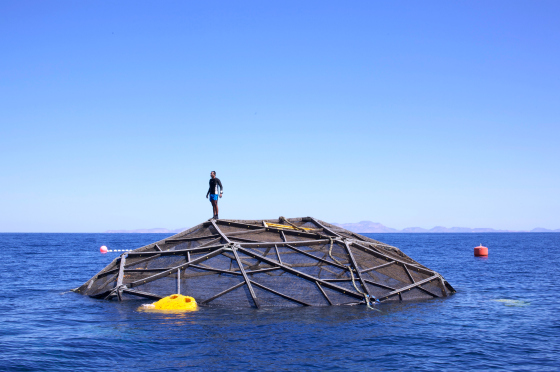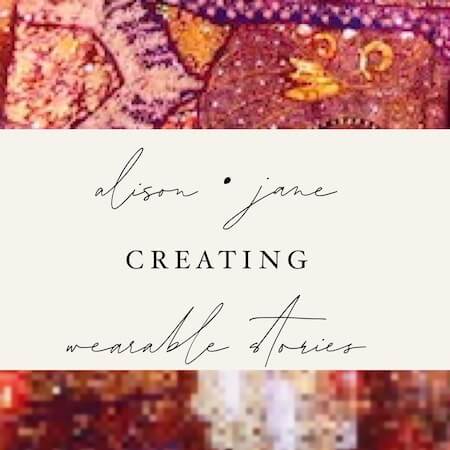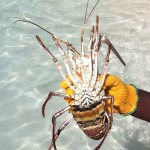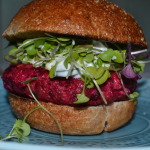Finding vegetarian fare in India is remarkably easy. I should clarify that term by saying I am of the the pescatarian variety, but have never had a problem eating delicous meals during my 6 visits to this wonderful country. This includes territory as far north as the heritage village of Pragpur all the way south to the sleepy town of Thekkady. Learning during my travels that some of the earliest recorded history of vegetarianism comes from India in the 6th century BC wasn’t that surprising. There are over 200 million vegetarians in the country, more than anywhere else in the world. This meal, prepared for us on a spice plantation in the hills was up near the top for a Meatless Monday in Kerala.

Barramundi Fish cooked in A Banana Leaf

You can find banana leaves in some specialy food markets, but i’ve adapted it so you can make it in a dutch oven.
Ingredients:
2 lbs Barramundi or other firm white fish than can be cut into chunks
1 onion thinly sliced
1 clove garlic
2 c. Coconut milk { light version is fine}
1 t. Curry powder
1 chile { choose the chile depending on how hot you like it- it will remain whole]}
One sliced tomato
Jasmine or basmati rice for 4
4 cardamom pods
Sauté onions and halved garlic in 1 T. coconut oil for 10 minutes. Add curry powder and stir to coat the onions. Add wholechile and coconut milk and simmer gently for 10 minutes to bring the flavors together. Add chunks of fish and cook for additional 15 minutes or until fish is fork tender. Place sliced tomato on top before serving.
Serve over rice to which 4 cardamom pods has been added in cooking. Remove pods before serving.
I think you could add sliced carrot rounds or broccoli to the coconut milk if you wanted to make it a full meal.
Serves 4
We were served the most wonderful spongey bread with the fish and our host promised it is easy to make. Appam is a type of southern Indian pancake made with ingredients of rice flour and coconut oil. I’ll let you know how it turns out after I give it a try.

 |
| Photo via B. Krist for GPTMC |
Four hours by train on Amtrack is an easy ride, with lots of prep time on board. The train is clean and comfortable, and with free wifi along the way, makes much more sense to me that driving the distance. The ride reminded me about how much I do love train travel and seeing the sites along the way.
After checking into the eco-friendly Hotel Palomar, {more on this gem to follow}we had a quick bite at adjoining Square1682 restaurant. Lucky for us it was restaurant week and the prix fixe menu was an unexpected treat. Combining locally sourced ingredients with world flavors it was a big hit. Roasted tomato soup, chicken and green bean salad and a desert to die got us ready to hit the ground running.
Its easy to see why the Benjamin Franklin Parkway was named one of the 10 Great Streets in the U.S. Renowned museums line the boulevard and much green space anchors it. The influence of Paris’ Champs Elysees is evident, and the Swan Fountain sits proudly in Logan Square. It was an active location, with visitors meeting friends, children playing and travelers like us stopping to take in beauty of the Alexander Calder sculpture, representing the areas 3 major waterways.
Philadelphia, like Boston, is a city of many neighborhoods, each with its own colorful personality and characteristics. One of the most interesting is the South Street area, and that was our next destination. On this street, I saw the first evidence of the city’s extensive Mural Arts Program. Every wall in the city is a potential canvas, and this philosophy is evident with over 3600 murals found all over the city. Begun in 1984 as a program to help eliminate graffiti, professional artists as well as those on the way, have been encouraged to apply to showcase their talent. There are several tours featuring the artwork, as well as downloadable guides for self guided experiences. It has to make Philadelphia the outdoor art mecca in the country.
There is an eclectic selection of shops, boutiques and restaurants, but we were most anxious to renew an old friendship. First stop was the Eyes Gallery, where Julia Zagar has been a supporter of Fair Trade long before it was trendy and has put much of her life’s effort into supporting sustainable crafts from around the world. My cohort in girlfriend getaways and I had been the lucky participants in several of Julia’s Art and Soul Trips which she co hosts with Deb Colburn from Nomad in Cambridge, MA. It was exciting to finally see her gallery in person and much time was spent perusing the many treasures she offers.
Julia’s husband, artist Isaiah Zagar, is responsible for one of the most magical and photographically challenging spots I have ever visited. The Magic Gardens is a mosaic wonderland, filled with colorful and over the top walls of up cycled tiles, mirrors and found objects which have come together to create an environment unlike anything you have ever seen before.
Zagar has devoted himself to beautifying the South Street neighborhood since he moved there in the 1960’s. His work can be seen throughout the streets adorning doors, building facades and inside his wife’s folk art store.
I so enjoyed sitting and taking it all in, as well as eavesdropping on the comments of others. Best were the children that wandered by outside and stood in awe trying to comprehend what they were seeing. It’s really impossible to describe, or capture on camera. Suffice to say at this point after a day of total visual stimulation, my head was spinning. We were lucky enough to break bread with this fascinating couple and call it a night soon after!
Green With Renvy partnered with Visit Philly for this trip.
What’s old is new again when it comes to ancient grains. All the recent talk about Paleo eating might seem like a fad, but in reality makes a lot of sense. Knowing a food hasn’t been altered since the beginning of time means it is a pretty attractive ingredient to feed my family. These grains are easy to prepare, add flavor and texture as well as a ton of nutritional value to meals. Let me introduce you to 6 ancient grains and a bean that you can add to your Meatless Monday menu.

Are you familiar with sorghum, amaranth and wheat berries? You might have used lentils, but what about mung beans? I’ve had a hey day discovering all these new ancient grains. All are good sources of protein and add great vitamins and minerals to a diet that does not include meat.
- Amaranth-this grain is traced back at least 6,000 years to the Aztecs and Incas. The taste is a bit nutty with a little peppery bite. Often used in breakfast porridge or ground into baking flour, amaranth can be used in soups and salads or popped like corn and even used in dressings. It is rich in amino acids such as lysine and gluten-free.
- Wheat Berries-these are one of my favorites. A wheat berry or wheatberry is an entire wheat kernel, composed of the bran, germ, and endosperm. Wheat berries have a tan to reddish brown color and are available as either a hard or soft processed grain.They take time to cook, so plan accordingly. Delicious in summer salads or warm with goat cheese and a light dressing. I especially like to use them (or farro) to replace the rice in this power packed riff on quiche that my family requests again and again.
- Red Lentils-also known as Masoor Dal, lentils appear as far back as the Old Testament. Technically, lentils are considered a grain legume known as a pulse, which means they are harvested for their seeds. Ranging in color from red to brown to green and black, they are small little lens shaped seeds, and come in many different colors.
- Green Lentils-originally grown in volcanic soils near Puy, France, they are often used as a meat substitute in Eastern cooking. Rich and firm in nature, they are a great addition to soups, salads and vegetable dishes. They are a good source of fiber and gluten-free. Try them in a recipe for stew or in these other suggestions for Meatless Monday.
- Sorghum-originated in Africa thousands of years ago and spread along the ancient trade routes to Asia. Today it remains a staple in India and Africa. The hearty, chewy texture is a great addition to pilafs and cold salads. It is also tasty popped like popcorn.
- Farro-yes I am fond of farro. Similar to wheat berries, this crunchy grain is a great substitute for rice and can give a new spin on risotto. I especially like this recipe for grilled Haloumi and farro. In ancient Rome, it was a diet staple and provided one of the main sources of nourishment. Farro was even used as a form of currency. Today it is highly regarded in Italy and used in many traditional Tuscan dishes. There’s good reason they call it the “mother of all wheat”.
- Mung Beans-native to India,they have been cultivated for thousands of years as a delicious source of nutrition. Today, they are most popularly known for their wonderful “bean sprouts”. Whole mung beans have a slightly sweet, nutty flavor and can be cooked on the stovetop like common beans. I like to use the sprouted mung beans which preserves peak nutrition and is sprouted at low temperature. This makes them easier to digest and the protein more easily absorbed. They are packed with vitamins and minerals, low in calories and are cholesterol free.
Now that you are acquainted with these ancient grains (and a bean) will you incorporate any into your diet? Perhaps you already enjoy them in a favorite recipe. Leave me any of your ideas in the comments. I’m always looking for new ways to use these 6 ancient grains.
I was thrilled when PBS contacted me to review EARTH A New Wild which begins airing nationally February 4th. Writing about sustainable lifestyle and travel on Green With Renvy, I felt it would be of great interest to you. After viewing the documentary, I have no doubts. The five part series represents a shift in the paradigm of man’s relationship with nature. Following the journey of Dr. M Sanjayan to over 20 countries, the film presents a positive message about the role people can play in nature’s survival.

The five themes: Plains, Oceans, Water, Forests and Home include the work of Jane Goodall, a longtime inspiration to me, and her efforts to save chimpanzee habitats in Tanzania, a Chinese scientist who rescues, breeds and rewilds pandas and Portuguese cork harvesters whose efforts in the forest work together to strengthen the entire ecosystem. Oysters are cleansing the polluted waters of New York City and AIDS connects a small fish to the villagers of Lake Malawi. In all these examples, it is people playing a key role in helping nature thrive. Nature, in turn helps to balance out the survival equation.
Host of the program, Dr. M. Sanjayan, is a well known voice in the conservation community and a regular contributor to the Discovery Channel, CBS News and Showtime. As he takes viewers on a remarkable journey to some of the most remote places on earth, the scientist finds many of his beliefs about the relationship of people and wildlife challenged. Humans are not viewed as the traditional antagonists to nature, but instead its partner. Integral to the project is observing the change in his point of view.
The film begins in Sichuan, China where a passionate scientist is working with cutting edge fertility treatment to breed pandas in captivity. Most challenging is the epic undertaking of cracking the code and rewilding the bears. Using Big Brother observation techniques, the cubs with the most “wild’ characteristics will be selected and returned to the bamboo forest. I must admit I was a bit uncomfortable as I watched what looked like the impossible. I tend to lean towards a survival of the fittest mentality, and this was certainly a different kind of world-The New Wild, where man and animals learn to co-exist.

During the 1990s Vultures in Asia were being inadvertently poisoned by us and driven to the brink of extinction. Once considered low value and ugly – the vulture is now being re-appraised as a local hero. Photo via Joe Loncraine
In India sacred cows roam freely on the streets. During a recent visit I saw firsthand how nature’s imbalance was shifing the landscape. The much maligned vulture is the earth’s perfect undertaker. Powerful enzymes in their stomachs can neutralize just about anything, and the population of birds fed off the sacred cows leaving only bones in their wake. Over a period of 15 years, more than 90% of the vultures had disappeared from India’s skies. The cause of this decline was a drug called diclofenac, a anti-inflammatory used to reduce pain in sick cows who are not killed in the country for religious reasons. Without the vultures performing this critical role, feral dogs multiplied and pathogens took hold in this fetid breeding ground. Rabies and anthrax exploded in neighboring villages. It was a near perfect example of how the disruption of nature can cause chaos. The drug has been banned and efforts to breed the vulture are succeeding in northern India. For the first time in 20 years, numbers of vultures are on the rise again and there is new understanding by the people of the symbiotic relationship necessary to keep the ecosystem healthy.
The story of the mangrove forests in the Sundarbans of Bangladesh was another I found fascinating. Here the ecology of fear is hard at work. The attack of a tiger on a human is a common story, but people still venture into the mangroves for survival. Storms regularly cycle through the area and leave dead bodies in their wake. Tigers have a taste for human flesh which leaves man and beast on edge and protects the area. Deer remain skittish; the tiger prevents them from overgrazing an area and keeps the grasses healthy. Locals limit expansion which would in turn harm the mangroves. There is fear of the roaming tigers. Doing its part, the mangroves provide a breeding ground for food and protect inland villages by absorbing 40% of the force of a tsunami. Sanjayan’s conversation with the locals revealed a comprehensive understanding of the cooperation necessary for the big picture. Even with personal tragedies from the tiger, they are tolerant and grasp the animal’s role as it relates to the ecology of fear. It was such a basic and at the same time brilliant observation.
Again and again new examples of this co-dependance, this new reality of wilderness, illustrate how we are inextricably woven together. Learn about the rise of slime in our oceans from Jeremy Jackson and ‘Water World’ type offshore fish farms in Mexico. Beautifully photographed footage takes us on a visual journey to parts of the world that many will never have the chance to see. This is a groundbreaking series for nature films with a refreshingly positive message of the symbiotic relationship that can occur between man and nature.
Look to PBS for local listings of Episodes of Earth–A New Wild in your area.
Green With Renvy was given a copy of Earth–A New Wild for screening purposes.
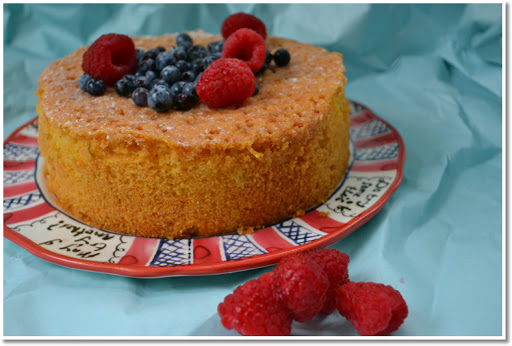
My parents are responsible for my always wanting cake and ice cream. Luckily, I’m a big yogurt fan, and am perfectly happy these days to substitue delicous Greek yogurt and save on the fat. This cake is also super moist, flavorful, and the honey adds just the right touch of sweetness with a hint of lemon. I served a wedge with a dollop of plain Greek yogurt, drizzled some honey over it and topped with fresh berries. It was pretty much perfection on a plate.

Honey Polenta Lemon Cake
Makes 1 (8-inch) round cake
1 cup unsalted butter, softened, plus extra for greasing
¾ superfine sugar, preferably unrefined
3 tablespoons honey, plus 3 more tablespoons for glaze
1 ¼ cups fine polenta
2 cups almond flour
1 teaspoon baking powder
1 teaspoon kosher salt
3 large eggs
3 sprigs fresh mint
2 teaspoons lemon juice
To serve:
Fresh mint sprigs
Greek yogurt {I used Stonyfield plain Greek}
Fresh berries {optional}
- Preheat the oven to 350 degrees. Use butter to grease an 8-inch round spring-form cake pan.
- In a large bowl, beat the butter with the superfine sugar until light and fluffy. Add the honey and beat again until pale. Mix the eggs in one at a time.
- Mix the polenta with the almond flour, baking powder and salt, then add a large tablespoon of this mixture to the butter and sugar mixture and beat well.
- Whisk in the dry ingredients and then blend in the fresh thyme (if using) until you have a thick batter. Spoon this into the prepared pan and smooth the top.
- Bake for 30 minutes, then reduce the oven temperature to 325 degrees and bake for 20 minutes longer, or until the cake is golden and risen and a metal skewer inserted in the center comes out clean. Cover the cake with parchment paper toward the end of baking if it is browning too much. Remove from the oven.
- Heat 3 tablespoons of honey in a small saucepan over low heat until the honey begins to thin.
- Place the warm cake, still in its pan on a wire rack and, using a thin metal skewer, make holes in the top. Strain the warm honey over the cake so that it soaks into the cake. Let the cake and honey cool to room temperature. Garnish with mint sprigs and serve with Greek yogurt.(my favorite is Stonyfield)


























